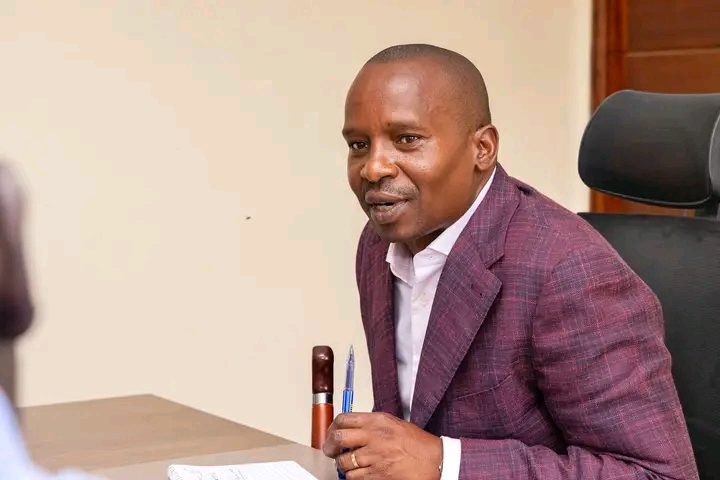Nairobi,
Friday, March 22, 2024
KNA by Michael Omondi
The Directorate of Children Services (DCS) in partnership with Child Fund has organized a one day sensitization forum with relevant Nairobi County stakeholders working with children in a bid to strengthen the child protection system through prevention and response to Online Child Sexual Exploitation and Abuse (OCSEA).
The DCS has developed an OCSEA training manual for Social Service Workforce and the Standard Operating Procedures that include building the capacity of county stakeholders on identification and response to OCSEA cases, and identification of Trainers of Trainers (TOTs) in the social service workforce to cascade OCSEA message to the Sub County level.
Through the Safe Community Linkages for Internet Child Safety (SafeCLICs) Project, the goal is to respond to OCSEA and systematically strengthen the Kenyan government agencies’ capacity to prevent and respond to OCSEA, improve children’s self-protection skills with the support of caregivers and communities, and also strengthen public awareness of OCSEA and connections to reporting and referral services.
While leading the consultative forum at a Nairobi hotel, the Deputy Director at the Department of Children Services Judy Oduor defined OCSEA as all acts of a sexually abusive and exploitative nature carried out against a child that have, at some stage, a connection to the online environment.
Oduor highlighted that OCSEA manifests through sexual communication with a child- Chats, voice/video calls, producing, accessing, possessing, consuming or distributing Child Sexual Abuse Materials (CSAM) widely referred to as child pornography, use of threats and blackmail to make children do something that is sexual against their wish, and live streaming of sexual content by children.
“Other manifestations include showing pornographic videos and images to children as part of grooming them, luring children online and trafficking them for sexual abuse and exploitation, use of social media and online gaming platforms by predators to meet, groom, and abuse children and adolescents, pop-up pornographic images, GIFs and sex videos on different social media platforms, and online predators asking children to take naked pictures and share them on social media platforms.The forms of OCSEA including grooming, sexting, live streaming, sextortion CSAM and cyber-sex trafficking could all be experienced on all common platforms such as TV programs, Online games at the play stations or Personal Computer (PC), Online books /E-books, social media platforms, smart gadgets like Smart TVs, smart phones and Smart watches, video dens, virtual reality and chatrooms,” added Oduor.
She pointed out that poverty, curiosity, peer pressure, increased internet penetration, ignorance of the online dangers, fame and attention seeking behavior online, social isolation, self-esteem issues, blackmail and threats from the abuser, problems within the family- dysfunctional families, lack of parental involvement in online life of the child, and ready availability of electronic gadgets were some of the factors that made children vulnerable to OCSEA.
Oduor stressed that OCSEA has extreme negative effects on children including loss of trust, self-blame, post-traumatic stress disorder, crippling anxiety and clinical depression, addiction to social evils, isolation and poor performance in children’s activities.
According to Data from the Disrupting Harm Household survey, 67 percent of children aged12-17 years are internet users in Kenya and in rural areas, 67 percent of children are internet users compared to 80 percent in urban areas.
The same survey also claims that among internet-using children, 60 percent go online at least once a week, with older children being the more frequent users.
Boys, on the other hand, go online more frequently than girls.
Child Fund Kenya Project Coordinator Beatrice Muema noted that online child sexual exploitation and abuse have emerged as significant challenges in recent years, posing threats to the safety and well-being of children in Kenya.
This, she reiterated, presents us with the need for proactive measures to combat this form of exploitation and protect vulnerable children in the digital realm.
Muema disclosed that Kenya is a signatory to several international instruments in addition to the National Laws and a comprehensive legal and policy framework at the international, regional and national levels to address OCSEA.
“The national laws dictate the offences and their corresponding penalties. The punishments and penalties for OCSEA offences are severe,” she emphasized, noting that Regional and International laws do not provide penalties for OCSEA offences.
On collaboration and roles of stakeholders, Muema reiterated that a coordinated response between different sectors in the country including the children themselves, parents and caregivers, education sector actors, enforcement and compliance sector actors, justice sector actors, health system actors, social workforce, community level support, and the ICT Authority is needed to prevent child sexual exploitation and abuse online, and safeguard children.
In his remarks, Robert Muema who oversees family and children services in Nairobi County Government’s Department of Social Services maintained that children’s issues, their welfare and protection were a key subject that required in-depth involvement especially in Nairobi county since it is the capital and should lead by example.
While observing that common issues of abuse of children including child labour and physical abuse have been easily dealt with in the past, Muema pointed out the current threat of OCSEA which proves to be a daunting task to overcome.
He said that children could now easily access the internet through mobile phones and other electronic gadgets and within a fraction of a second, be exposed to the evils of social media platforms.
The forum provided channels for the public to report OCSEA incidences and cases including In-App Reporting tools for social media applications.
The national Child Helpline 116, Sub-County Children offices, DCI-Anti-Human Trafficking and Child Protection Unit, free toll no.- 0800 722 203.
Others are National Police service/hotline 112/ 911 /0800730999, Communications Authority of Kenya – Computer Incident Response Team (CIRT) via +254-703-042000 https:// kecirt.go.ke/ Kenya Film Classification Board (KFCB) Hotline 0711222204 or info@kfcb.go.ke and the Internet Watch Foundation-Kenya- https://report.iwm.org.uk/ke.
Courtesy; KNA





